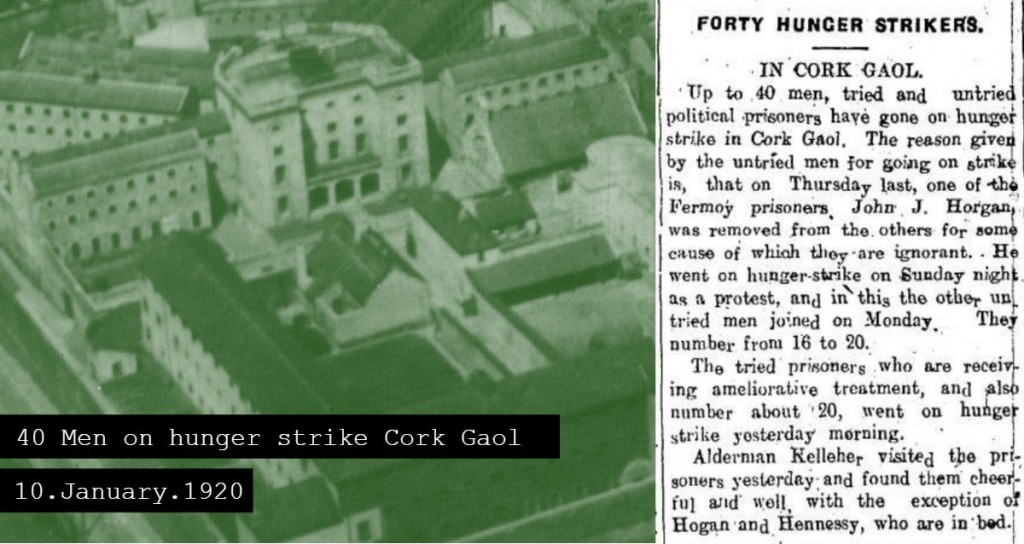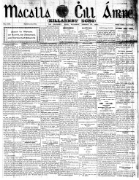
In January 1920 the War of Independence intensified with the IRA carrying out a number of offensives in almost every county. To mark the anniversary of this aspect of the campaign, this month we offer stories about the conflict as reported by the newspapers of the day.
One hundred years ago this week, some forty men commenced a hunger strike in Cork Gaol, a tactic which was to be adopted by Irish republicans over several generations. On this occasion, the hunger strikers consisted of two groups of men- those who had been tried and those untried but held since their incarceration. In early 1920 tension in the gaol increased following a number of attacks on the RIC and their barracks throughout county Cork. In particular, an attack on the RIC in Fermoy was said to have angered those in charge of the prison. As a result, one of the prisoners John J. Horgan was removed from the remainder of the group for no apparent reason. In protest to this treatment, Horgan began a hunger strike on Saturday night and was joined the following Monday morning by the rest of the ‘untried’ prisoners, numbering between them 16-20 people. Later that day the twenty ‘tried’ men also commenced a hunger strike. Later that week, in an effort to highlight their plight they were visited by Alderman Kelleher who found them to be ‘cheery and well’ with the exception of Horgan and Hennessey who were too ill and were in bed. While this hunger strike did not claim any victims, later in 1920 volunteers Mick Fitzgerald and Joe Murphy died in Cork gaol. There were other hunger strikes during the War of Independence including at Easter 1920 when more than fifty men in Mountjoy gaol refused food. Perhaps the most celebrated hunger striker during this period was Terence MacSwiney, Lord Mayor of Cork, who died after 74 days on hunger strike in October 1920.


